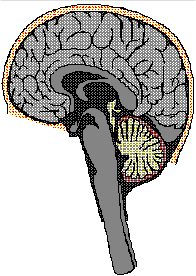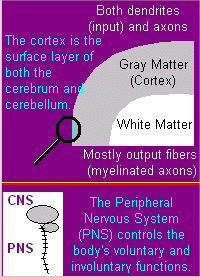15 Jun Natural Intelligence
The Gross Anatomy of Smart
 The biology of understanding is not fully understood. But there are some things we can infer from what we know about how the brain works that may help us in modeling smarter systems. I love looking inside the brain for clues on what it does so I can help design smarter computers. I also love the literature on Neuroscience (take a look at Corsi) and I am amazed at the progress from the time I began my studies until now. In today’s post, I will introduce some biological context to the questions of what are the mechanisms of natural intelligence and how to move from information to knowledge.
The biology of understanding is not fully understood. But there are some things we can infer from what we know about how the brain works that may help us in modeling smarter systems. I love looking inside the brain for clues on what it does so I can help design smarter computers. I also love the literature on Neuroscience (take a look at Corsi) and I am amazed at the progress from the time I began my studies until now. In today’s post, I will introduce some biological context to the questions of what are the mechanisms of natural intelligence and how to move from information to knowledge.
We can learn much from the gross anatomy of the brain. Understanding the brain’s structure and the macroscopic interaction of its parts helps provide context for us to look into the finer parts and interactions within this amazing organ. While this blog deals specifically with the human brain, the brains of many other organisms are similar. Our objective is to explore complex cognitive processes like thinking and making decisions. Although perceptual tasks (like seeing, hearing, and smelling…) performed by most animals resemble human perception, human cognition is much more complex than that of less intelligent creatures. (I know, I know. The behavior of some humans makes me wonder about that one, too.)
| Understanding Context Cross-Reference |
|---|
| Click on these Links to other posts and glossary/bibliography references |
| Prior Post | Next Post |
| The Mind and its Brain | Did you change your mind? |
| Definitions | References |
| understanding brain | Corsi 1991 |
| cognitive neurons | McCarthy 1959 Anderson 1988 |
| specialized context | Curtis 1990 Singh 2004 |
Superficial Matters

Do the words “gray matter” make you think of complex thinking? If they do, keep that thought in the back of your mind. At the forefront, keep the idea that the brain or central nervous system (CNS) has functional areas specialized to various cognitive tasks. The main areas described in this volume are the cerebellum and cerebrum. We begin, however, with overviews of the diencephalon and hippocampus, which illustrate the specialized divisions of the brain, their complex layout and interdependencies, and the diversity of neural specialization. In subsequent discussions, the terms “gray matter” and “white matter” appear frequently.
Gray matter (approximately 1 CM thick) consists primarily of neurons. White matter is made up primarily of myelinated nerve fibers. There are two main functional subtypes of axon fibers: afferent, meaning those that carry sensory impulses to the brain, and efferent (sometimes called motor nerve fibers) that carry impulses away from the central nervous system. Dendrites, neurites and spines are nerve fibers that are neither afferent nor efferent relative to the central nervous system.
Thought processes all come down to electrical impulses zooming around in a mass of gray jello with white stuff in it. It should come as no surprise that many people dream in black and white ;/. I will hereafter distinguish between flow to and from neurons and areas of the brain using familiar terms borrowed from computer science: “input” and “output.” The cortex is the surface layer of both the cerebrum and cerebellum. It contains both dendrites (input) and axons (output). The white matter contains mostly output fibers (myelinated axons).
The Cybernetic Connection
Certain aspects of our cognitive apparatus lend themselves to imitation using advanced electronic technologies as I discussed in “The Mind and its Brain“. Gross anatomical divisions in the brain give important clues for modeling. As an example, the fact that the cerebellum, whose main responsibility is sending  electrical signals to the muscles to control movement, is structured very differently from the cerebrum, or cerebral cortex where reasoning, judgement and language production and interpretation occur. These structures provide the very foundations of common sense: a brain function that is still completely elusive to computers and inferencing algorithms.
electrical signals to the muscles to control movement, is structured very differently from the cerebrum, or cerebral cortex where reasoning, judgement and language production and interpretation occur. These structures provide the very foundations of common sense: a brain function that is still completely elusive to computers and inferencing algorithms.
“Commonsense inferencing involves many types of reasoning, including analogical, statistical, logical, and heuristic methods. Solving even a small set of commonsense scenarios provides an ideal anvil for the development of robust reasoning systems, because the scenarios require broad-based knowledge, many different reasoning procedures, multiple representations and the ability to generalise to new situations via analogy, rule induction and other kinds of model-learning processes” (Singh 2004). I contend that the specialized functions of different areas of the brain are key to the robustness of the human reasoning system.
In later posts, we’ll talk about the areas of the brain and how their specialization may affect the way we model intelligent systems. See you again soon.
| Click below to look in each Understanding Context section |
|---|








